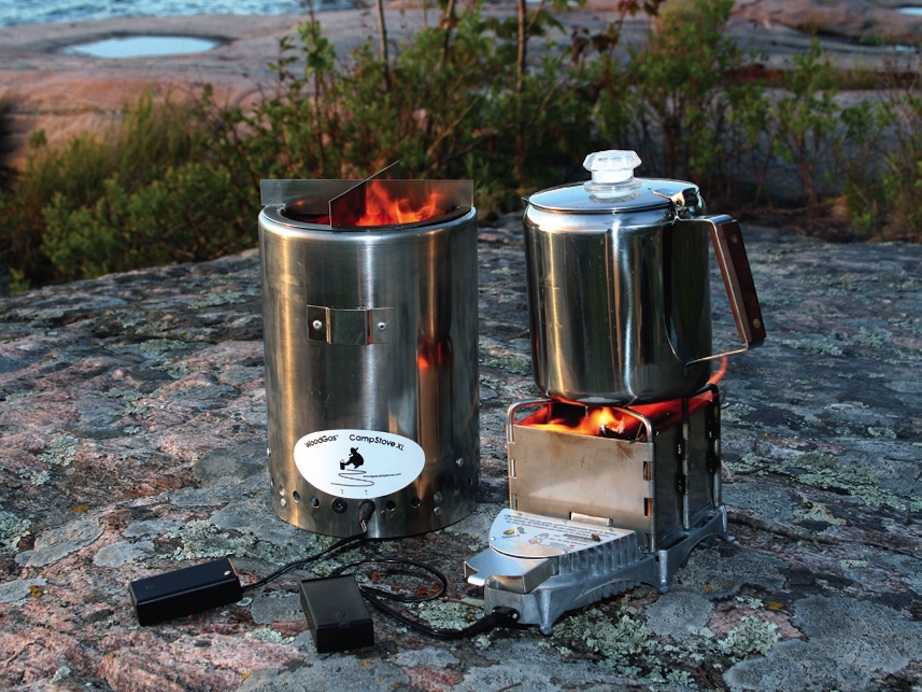This wood burning stove gear review originally appeared in Canoeroots and Family Camping magazine.
Imagine the implications of a “new” type of camp stove, the fuel for which is not only free but readily available at every campsite. No more guessing how much fuel is left in a sealed canister, no more trips to the hardware store to resupply, no more leaky bottles in the food pack and no more carrying around weeks worth of fuel or fretting over dwindling supplies.
If not liquid fuel, then what do these new stoves burn? Wood.
The recent availability of two compact, wood- burning camp stove models signals a renewed interest in an old idea. These stoves use a modern design and battery power to burn wood efficiently. Campers can enjoy their morning brew minutes after modest wood-gathering efforts.
The WoodGas Campstove, available from Ostrom Outdoors, and the Vital Stove, made by Solhuma and distributed by Eureka, are leading the back-to-wood movement. Both models use small wood tinder for fuel, no armloads of firewood necessary. They work by employing fans to feed
the flames so they burn hot enough to turn the combustible smoke given off into a second heat source. The results are extremely efficient stoves that can kick out up to 20,000 BTUs in minutes.
Wood stoves may offer a lighter and more convenient means of cooking for those who avoid campfires or trip in areas where open fires are sometimes banned for fear of forest fires. Though the particulars of fire bans differ in each jurisdiction, the case can be made that these self-contained stoves are as safe as the gas stoves widely permitted.
Though the units themselves are heavier and larger than most gas stoves, the fact that no fuel supplies are necessary makes them easier to pack than their gas-powered cousins for trips of more than a day or two. They are well suited to small groups and those who have found traditional stoves finicky.
Enthusiasm aside, the stoves do have disadvantages. The battery packs which also serve as the fan control units on both models should be kept dry. The fan motors appear rugged, but as with all things electronic, hard impacts are a danger.
Solhuma claims the Vital Stove will run for eight hours at top speed on two AA batteries. Packing spare batteries is a good idea; there should be plenty of room in the pack that you used to use for extra fuel.
This article originally appeared in Canoeroots & Family Camping, Fall 2008.




